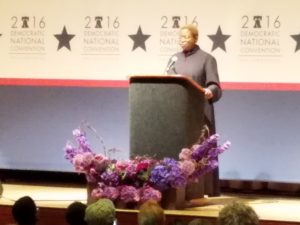In every journalism class I teach, I have a session or two on some practical matters that fall under the heading, “Things I wish someone had told me when I was your age.” The tips often have to do with issues I have confronted on the job that weren’t part of the curriculum or management agenda when I started out in the early 1980s – how to deal with racial or sexual harassment, for example. Here are some notes on the advice I gave to my students in my undergraduate courses this semester that is particularly attuned to this moment:
As a discipline within the academy, and as a profession, journalism is an institution as well as an industry. At its best, journalism has evolved norms, values and practices that are vital to a functioning democracy. It’s important that you understand these norms, values and practices and have your own informed positions on them. It’s also important that you develop a historical curiosity about these norms, values and practices, because these norms are being challenged. For example:
-
-
- Objectivity: Our tradition, at least for the last century, is that we strive to provide the best available version of the truth. As the American Press Institute puts it in their synopsis of The Elements of Journalism: What Newspeople Should Know, and What the Public Should Expect put it:
This “journalistic truth” is a process that begins with the professional discipline of assembling and verifying facts. Then journalists try to convey a fair and reliable account of their meaning, subject to further investigation.
Journalists should be as transparent as possible about sources and methods so audiences can make their own assessment of the information. Even in a world of expanding voices, “getting it right” is the foundation upon which everything else is built – context, interpretation, comment, criticism, analysis and debate. The larger truth, over time, emerges from this forum.
In addition to transparency, your journalistic and personal practice should have built-in safeguards against confirmation bias. Be aware of your filter bubbles – the tendency to restrict yourself to information that confirms your preconceptions. But more importantly, be aware of the implicit hypotheses in your reporting, and make a conscious effort to consider competing explanations for the data you find. Think in terms of “researchable questions,” not foregone conclusions.
- Norms. The Trump campaign and administration deals with the press in ways that are a distinct departure from the practices of previous presidential candidates and administrations. One reason for studying journalism history is so that you understand why these departures matter. Do a Google search for “Trump campaign journalism restriction” and you will see a slew of 2015-16 stories about ways in which the candidate and campaign kept journalists from obtaining the kinds of information and access routinely accorded during presidential campaigns. You will also see an analysis of how the Obama administration’s aggressiveness toward journalists working with leakers and whistleblowers gives Pres. Trump a precedent for targeting reporters trying to do legitimate watchdog reporting.One of the early skirmishes between the Trump administration and the national political press concerned access to press briefings typically conducted by the President’s press secretary. In February, the administration reportedly blocked the New York Times, the BBC, the Los Angeles Times, Politico and The Guardian from a press “gaggle” – an off-camera press briefing.
The White House move was roundly criticized – even by the conservative National Review. My point in bringing this up is that as journalists, you should understand why these norms matter. (Here’s a helpful backgrounder from the Boston Globe about how White House press briefings usually work. Similarly, you should understand what it means when the Senate Press Gallery denies credentials to Breitbart News because of its close ties to Administration officials, including former Breitbart CEO and current Trump senior adviser Steve Bannon. You ought to understand why those norms exist, why journalists think they matter, and why we expect you to uphold them.
- Mind your business. Once upon a time, say, back when I graduated college, you could count on getting a reporting or corporate communications job in a company that paid a salary with benefits. More often than not, that company had a mentoring program, and managers had incentives to develop talent. It wasn’t unusual for your employer to invest in your professional development, including graduate school. While you may still land in such a workplace, there’s a strong likelihood that your career will involve a string of freelance gigs. Some of these don’t pay well, while others can be quite lucrative. But what all of them will require is that you learn some fundamentals about managing a small business – from deciding on a business structure, to filling out tax forms, to joining professional associations that can help you grow your business, secure health insurance and help you understand and protect your legal rights. (Tracie Powell has some good practical advice on choosing the organization that’s right for you. ) Poynter has an online course in entrepreneurial journalism that has helped some folks I know. The Small Business Administration also has good general advice on starting your own business. My employer, The College of New Jersey, hosts a Small Business Development Center that has services specifically for student entrepreneurs.
- Invest in your professional development. I don’t have to make the case any more about the need for learning coding, design thinking, or community engagement. There’s lots of good advice on all of these things, and such groups as the Online News Association offer regular training. Since I teach undergraduates, I am often asked about graduate school. That’s a longer conversation, but fundamentally, choosing a graduate program should involve a clear-headed cost-benefit calculation. What return can you realistically expect to earn on your investment? But you should be reading the trades in your field regularly, and you should be participating actively in conversations in your professional associations, whether at conferences, local chapter meetings or online.
- Know your rights and responsibilities. In addition to your media law text and your stylebook, you should be familiar with these websites:
- The Digital Journalist’s Legal Guide from Reporters’ Committee for Freedom of the Press
- Legal Guides from the Student Press Law Center
- Take care of yourself. This can be a stressful business. Like law enforcement officers and medical personnel, journalists often see the worst of humanity. The Dart Center for Journalism and Trauma has helpful resources.
- Objectivity: Our tradition, at least for the last century, is that we strive to provide the best available version of the truth. As the American Press Institute puts it in their synopsis of The Elements of Journalism: What Newspeople Should Know, and What the Public Should Expect put it:
-
What would you add?


